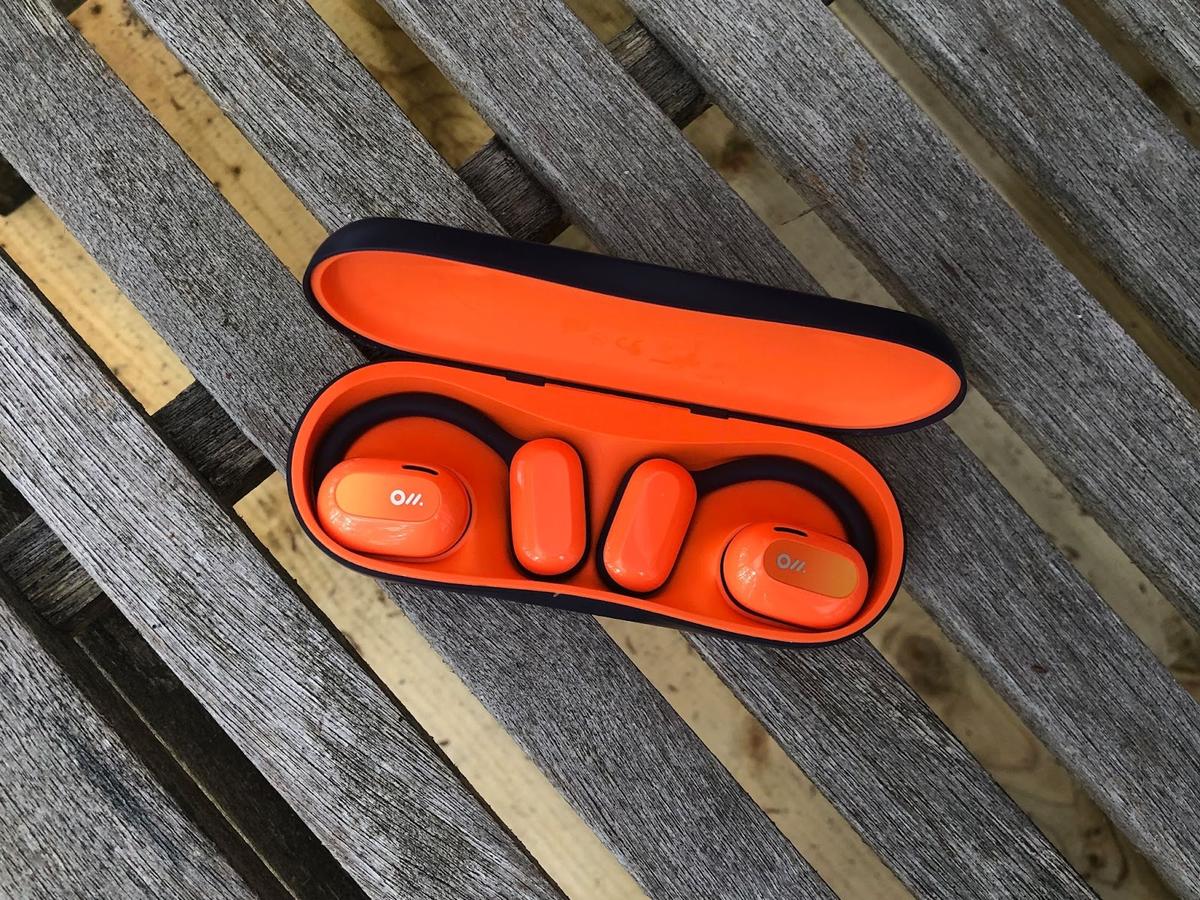The new headphone variant – open-ear earbuds – proves their worth.
Just when you thought there was nothing left to innovate in the headphone space, a new offshoot blooms like wildflowers. Sure, we’ve got open and closed-back headphones. Wired and wireless. In-ear monitors and earbuds. We’ve even got bone-conduction headphones for listening without using your eardrums.
Oladance is here to introduce you to the new idea of open-ear earbuds. Think of a hybrid of TWS IEMs and bone-conduction headphones.
An open-ear earbud clips around the ear and suspends a speaker in front of the ear canal, allowing the wearer to also clearly hear external sounds. A Bluetooth connection makes these things portable, and a water-resistant rating and secure attachment make them a great alternative for music listening while active.
- Good battery life
- Warm, full, pleasing sound
- Water resistant
- Extremely comfortable
- High-quality build
- Basic app with EQ
- Low-level audible hiss
- No internal battery in the case – requires plugging in to charge
- Not inexpensive if considering purchasing the charging case separately
- Battery warning tones easy to miss and nonspecific as to remaining time
Life’s all about compromise. You aren’t going to wear your huge, 1.5-pound, open-backed planar headphones to go for a run. Nor are you going to expect high-fidelity audio from bone-conduction headphones. Each has an intended purpose and a place.
Open-ear earbuds are envisioned to minimize the compromises of the other headphone types. They are more comfortable than traditional earbuds resting on the ear canal’s outer section. They are more natural sounding than bone-conduction. Their portable nature makes them attractive for cyclists, runners, and grocery-getters who want to maintain situational awareness.
While not the only option in the market for open-ear earbuds (JBL, Sony, Bose, and Clear Audio all have their take), the ‘Oladance Wearable Stereo’ (OWS) are serious contenders boasting features like a 16-hour battery life, comfortable multi-point support system, and large 16.5mm drivers intended to give a listening experience akin to a home stereo.
In the immortal words of Tom Petty, “I like to be an optimist, but I like to be a realist, too.” The concept of open-ear earbuds seems promising, but new ideas don’t always fly into the great wide open. Can Oladance deliver something new and beneficial, or will open-ear earbuds be a free-falling failure?
Company Overview
Oladance declares itself “THE worldwide leader in the open wearable audio industry.” The company was formed by ANC technicians with more than a decade of experience in the audio industry, and Oladance first proposed the concept of open wearable stereo (OWS).
Oladance is interested in context-aware wearables that interact naturally with the user in real life. Its goal is to promote integrated wearable devices and cloud applications, focusing on invisibility to the end-user and lack of wearing fatigue.
Technical Specifications
- Form: Open-back, earbuds
- Drivers: 16.5mm dynamic driver
- Bluetooth Audio Codec: SBC
- Battery Life (hrs): 16 hours, 160mAh capacity
- Charging Time: 1.5-2 hours
- True Wireless: Y
- Bluetooth Version: 5.2
- Mic: Y
- IPX: IPX4 – Protects from splashing water
- Weight (g): 12.7g (single ear)
- Colors: Interstellar Blue, Space Silver, Martian Orange, Cloud White
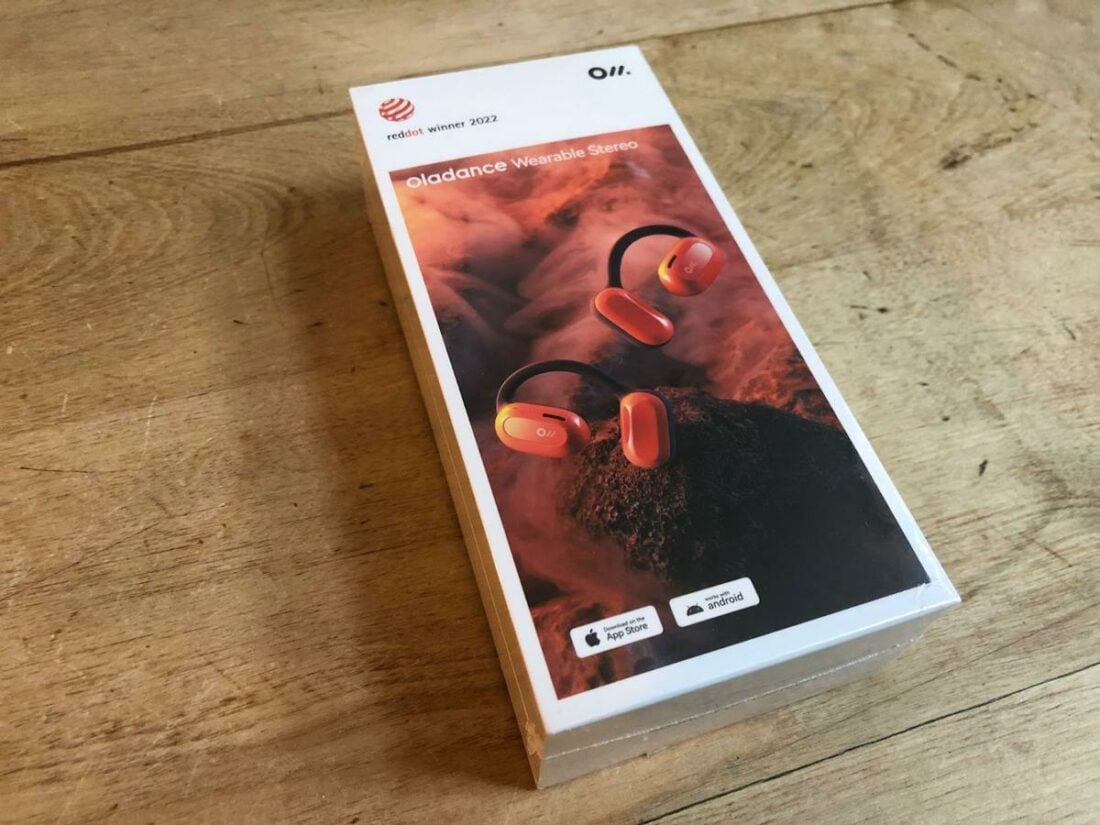
Packaging
The OWS come in a small white box with a product photo on the front and specifications on the rear of the cardboard sleeve. Slide it open, and you are greeted with the storage case in an injected plastic mold.
In the box
- Oladance Wearable Stereo open-ear earbuds
- USB-a to USB-c charging cable
- Silicone sleeves
- Charging case
- User manual
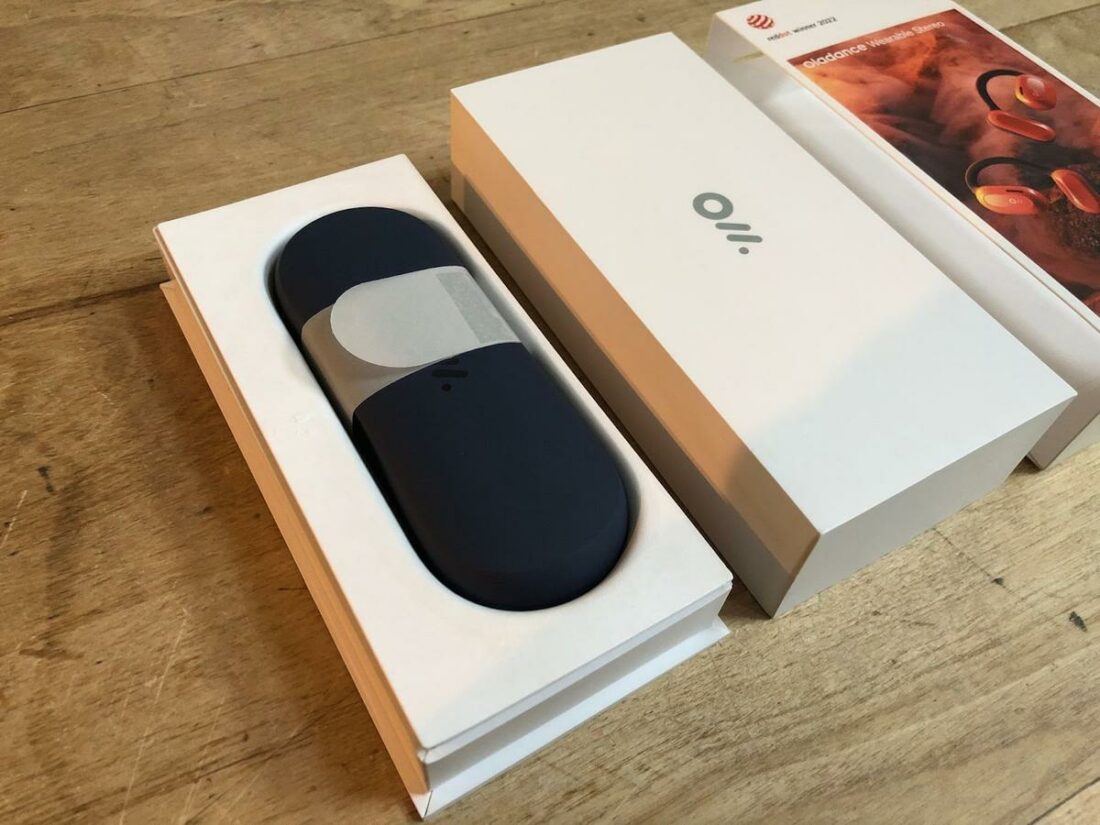
The most unusual thing about the accessories included with the OWS is the case. Like TWS IEMS, the OWS individual ear pieces must be returned to the case for charging. But, unlike most TWS, this case does not include an internal battery and must be plugged in to charge.
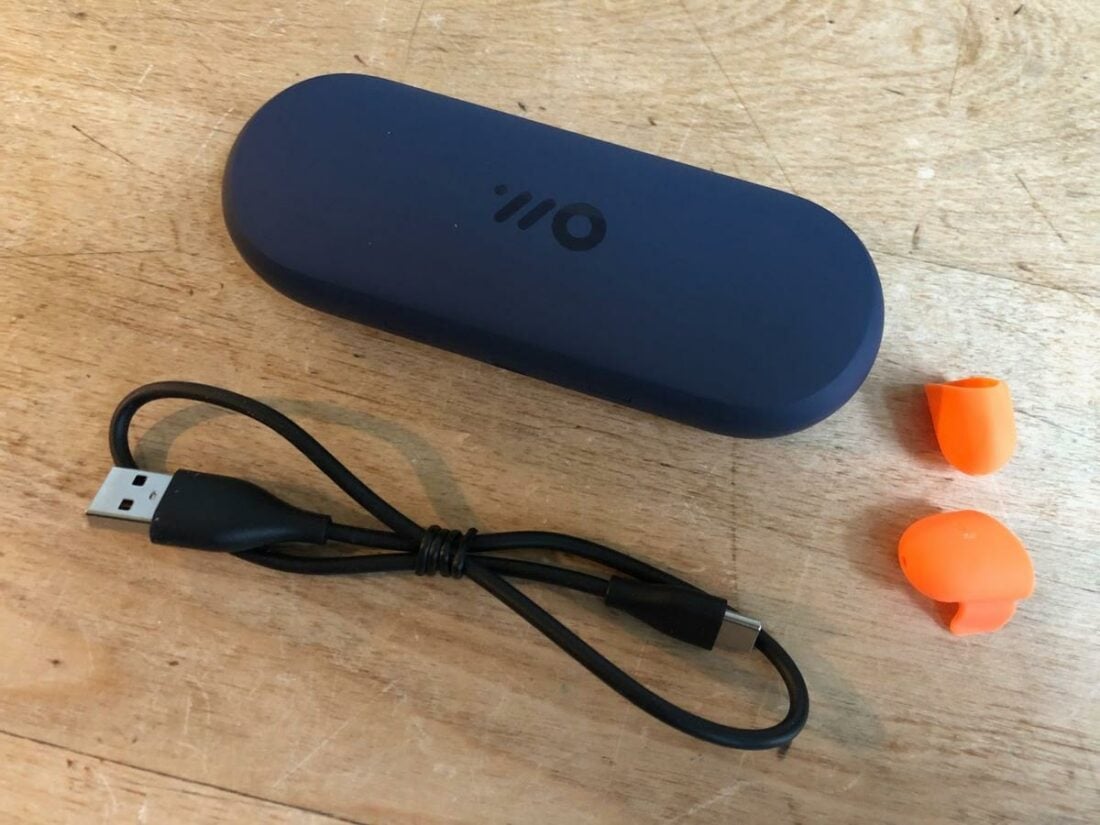
Design
The OWS are clearly something different when viewed on the ear – although they do have a certain unfortunate resemblance to the first generation of Bluetooth headsets from the early 2000s.
Leaning into the different looks, I decided to go with the “Martian Orange” color variant. You may prefer the more discrete Cloud White or Interstellar Blue options or the jewelry-inspired Space Silver. The cases are colored to match the earpieces, a classy touch.
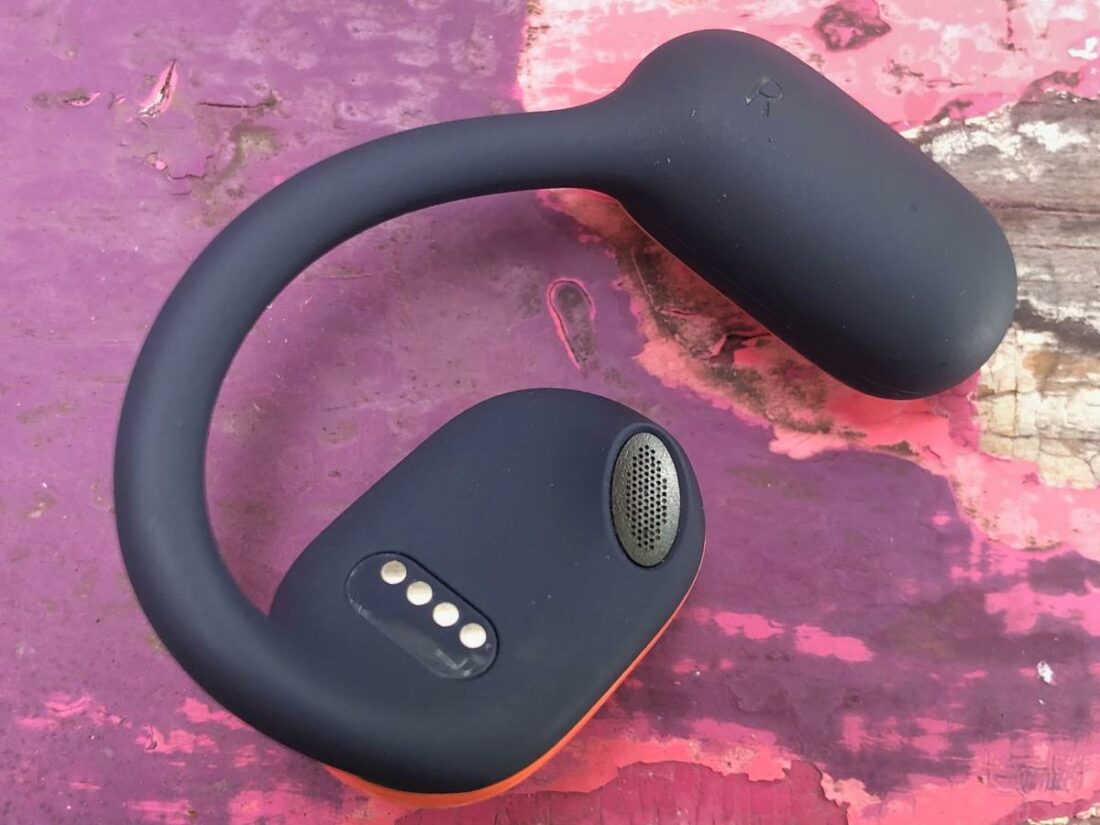
Each earpiece is comprised of two roughly equal-sized rounded modules connected by a curved, flexible silicone section that slides around the back of the ear. The inner and skin-touching bits are all silicone, while the outer sides of the modules are shiny plastic.
The outer module has all the vents for the internal speaker and charging ports, while the other (that sits behind the ear) is entirely smooth – I assume it contains the battery.
Additionally, each outer module has a flat surface for the touch controls. Single tap for play/pause, double tap to skip/back, triple tap for the voice assistant, and slide for volume control.
The app allows for customizing the touch controls.
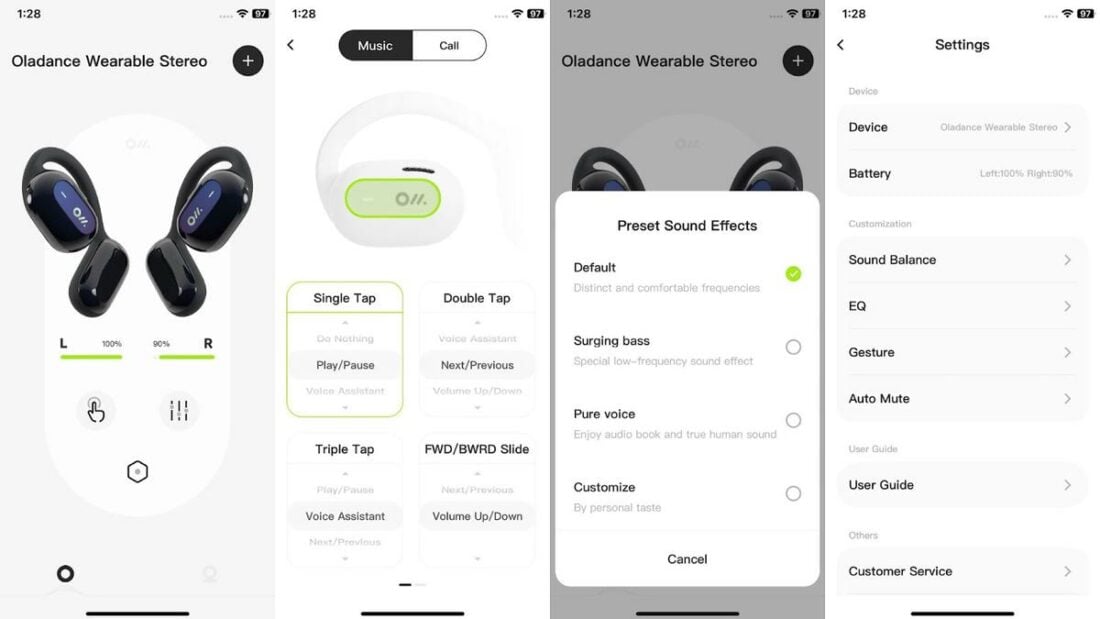
A LED on the outer module flashes to indicate low battery status (below 5%). There is a discrete audible chime (that I find easy to miss) that sounds when an earpiece is at 20%, 10%, and 5%. The battery level is displayed in the app.
At an impressive 16 hours of rated battery life, it’s easy to get complacent and assume they are always charged – especially if you mistakenly expect the unplugged case will have charged them, like with most TWS IEMs.
It always seems to come as an unfortunate surprise to me when one goes silent and requires plugging the case in to charge.
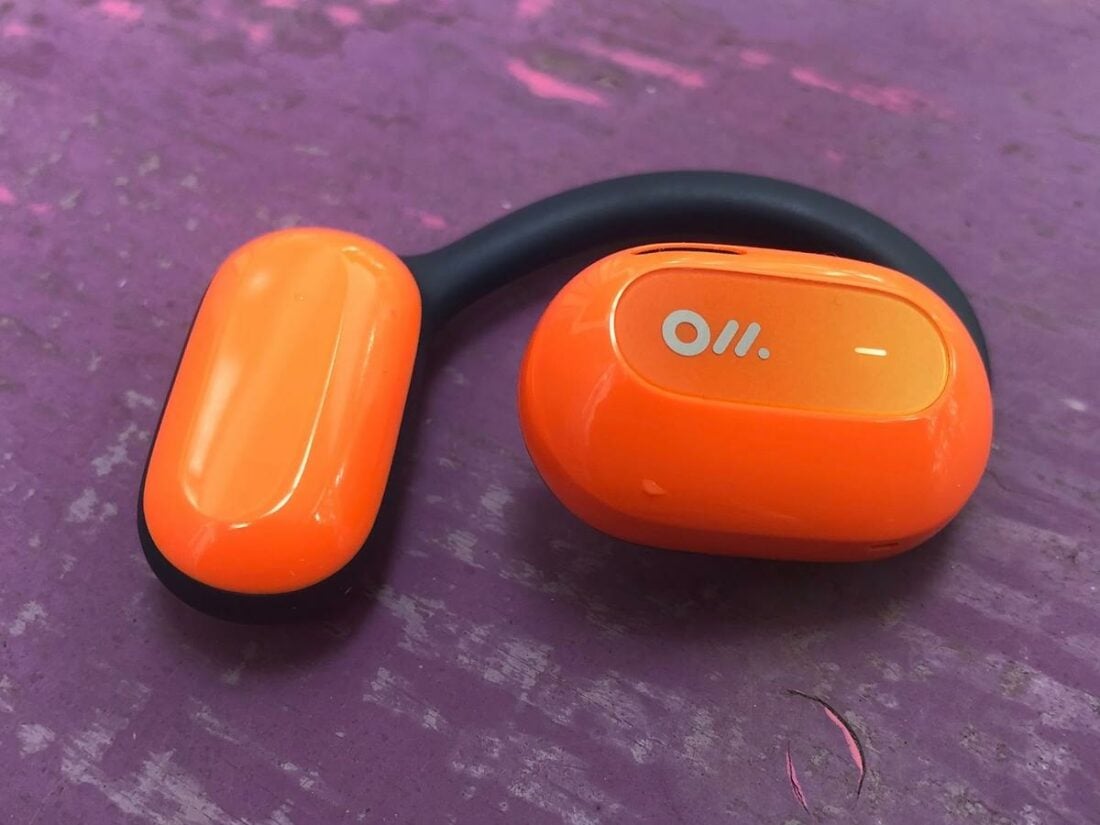
Comfort
The unique 5-point support fit system works extraordinarily well to ensure you forget you have the OWS on your head.
At 12.7g, they feel like they float on your ear and never seem to get uncomfortable. No hot spots, no unpleasant ear pressure, and no drawbacks – except if you try to lie down and a pillow presses the modules against your ear. I suggest vertical use only.
The OWS work decently with a ballcap or even with sunglasses with a bit of finagling, but if you are trying for the new reality combo of a hat, glasses, and mask, you may find things get tangled up.
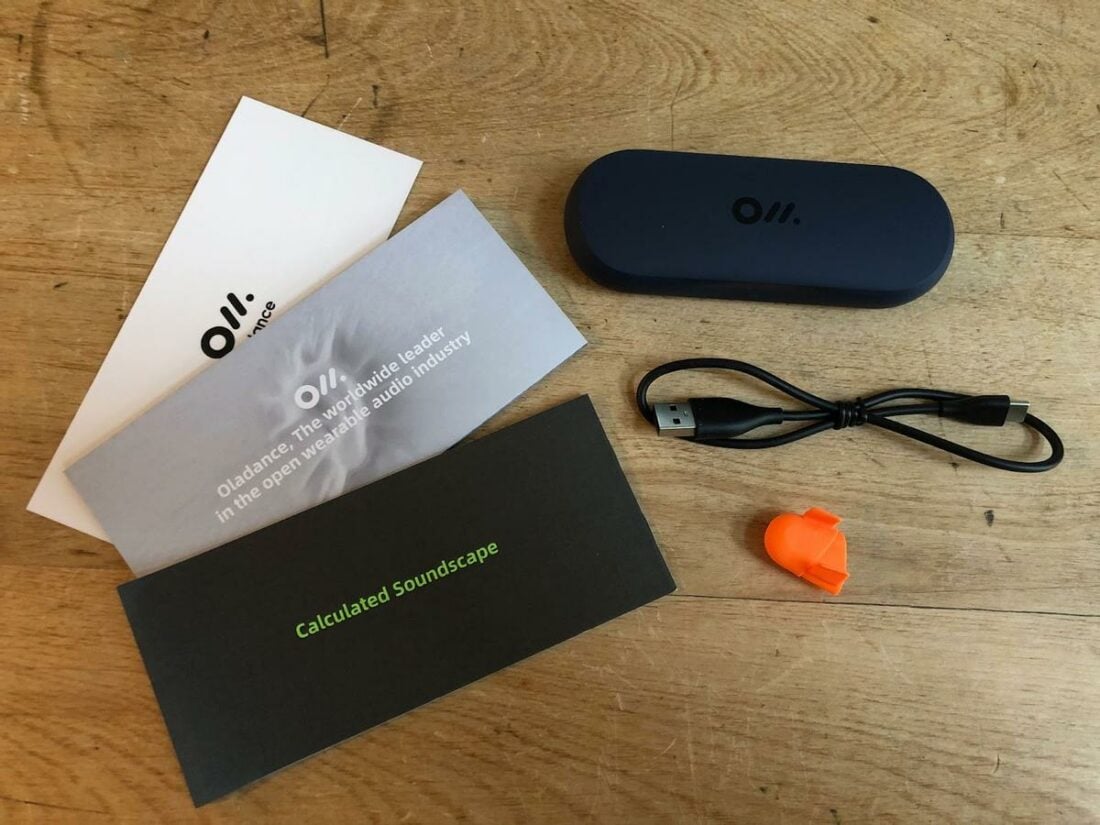
Internals
The OWS support Bluetooth 5.2 but only the SBC codec. While this choice maximizes compatibility and battery life, audiophile purists will likely be turned off. The decision to exclude higher-quality codecs is indicative of the intended purpose of the OWS.
This lifestyle product is designed for on-the-go, not critical music listening.
Bluetooth performance is very decent.
Several times I’ve been surprised when I’ve left my house and had the signal drop, only to realize I don’t have my phone in my pocket, but instead left it on the kitchen table 30 feet away and behind concrete walls. Inside my home, the OWS connect and work as if the phone is always 2 feet away.
Microphone performance and voice clarity are equally as impressive.
The OWS seem to go out of phase now and again, momentarily causing them to sound diffuse and odd. It happens infrequently, but I’ve never encountered this audio glitch with any other pair of wireless IEMs or headphones. I assumed this was just a Bluetooth stutter, but it turns out there is much audio trickery going on behind the scenes.
“Relying on the improvement of chip technology and algorithms in recent years, OWS uses multiple sound source points and dynamic monitoring and calculation to form synthetic sounds. Also, it dynamically adjusts the phase relationship between each synthetic sound source to suppress the diffusion of external sound and enhance the detailed performance of in-ear sound transmission.
In addition, sound frequencies that the human ear is not sensitive to are moved to the frequency band that the human ear is sensitive to, bringing better sound quality while reducing the threat of sound to hearing health.” – Oladance
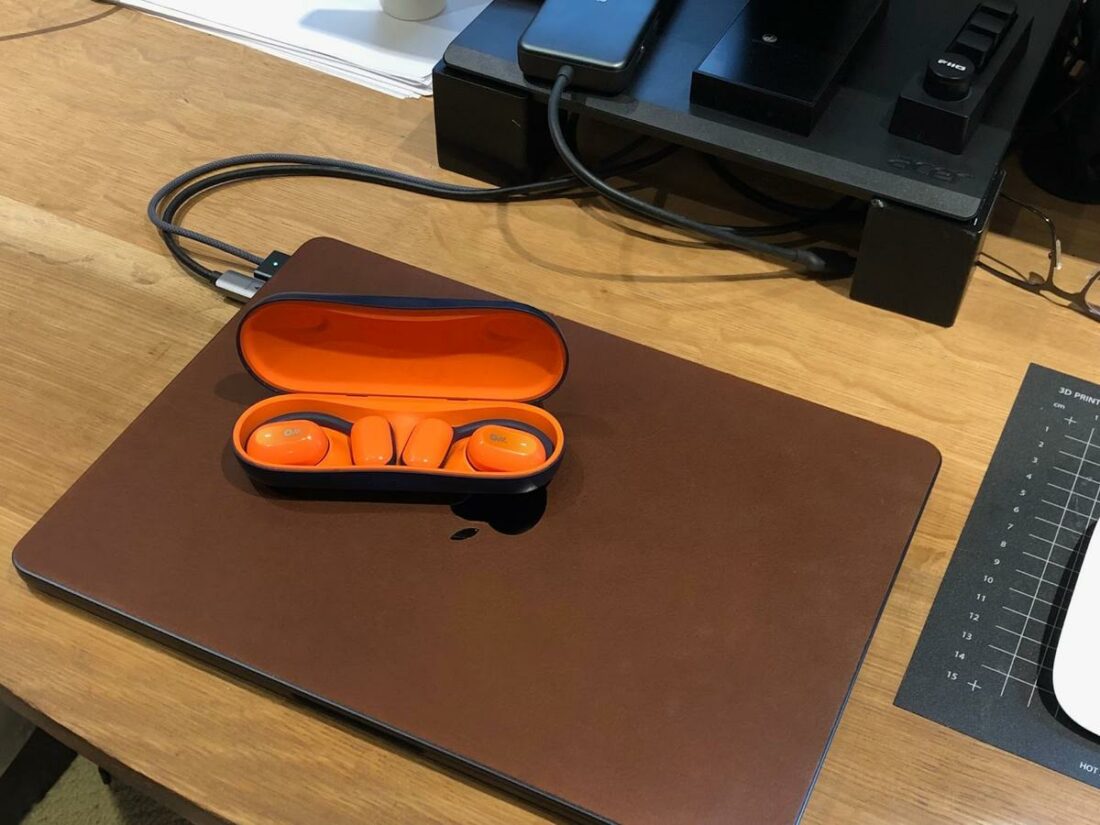
Oladance Wearable Stereo Sound
The use of the SBC codec and the design of the OWS means there is little audible difference in file format playback, regardless of playing mp3 files, streaming audio, or high-resolution music recordings.
In a quiet environment, there is an audible hiss with the headphones active but no material playing. The app allows for automatic muting at 15 or 60 seconds to minimize this effect, but it is noticeable if you are sensitive to this sort of background noise. The hiss is essentially indiscernible if you are outside or with something playing.
Playback volume is an issue with bone-conduction headphones when in a noisy environment. Excessive wind noise, traffic, or lawnmowers drown out the music. It’s a similar situation with the OWS; while they do a decent job playing at higher volumes, they can’t compete with very loud noises.
The open-ear design allows external noise to pass through, making the OWS indiscernable in loud environments.
I try to set my expectations for a device like this in line with its intended purpose. Just like I’m not taking my planar headphones to the beach, I’m not expecting the OWS to replace high-end, critical-listening, full-sized cans. After recently discovering and enjoying the convenience of bone-conduction headphones, it is to those that I primarily compare the OWS.
The OWS sound far better.
The frequency extremes are better portrayed on the OWS than by bone-conduction competitors. Their audio performance came as a pleasant surprise, and I get the reference to home stereo listening. The OWS feel like the sound is coming from beyond your ears, rather than the ‘inside-your-head’ experience of IEMs or earbuds.
The overall sound seems airy and spacious, with a natural presentation.
Bass
The OWS sound full and warm, even though there is no seal to boost the bass. Low-end presence is remarkably solid, if somewhat thicker and less controlled than may be ideal. It’s not at the same level as closed-back headphones or bass-heavy IEMs, but they do better than I expected.
Midrange
Midrange performance is the strong suit for the OWS, and voices take on a full, natural, and engaging character. I tend to use active-style headphones more for audiobooks and podcasts than music listening, so voice reproduction is especially important to me.
The performer’s voice seems to be coming from the space around me rather than pinpointed within my skull. This isn’t to say that imaging suffers, but rather that the impression of the soundstage is remarkably wide.
It’s a different sensation than listening to IEMs, and I quite enjoy it.
Treble
A limited Bluetooth codec ensures that the highest frequencies roll-off, and the prominent low end certainly has more presence than the upper extremes. However, the softer treble response makes the OWS easy to listen to and non-fatiguing. Again, I’m reminded of the Koss KSC75 – they share similarities in their sound, not just form factor.
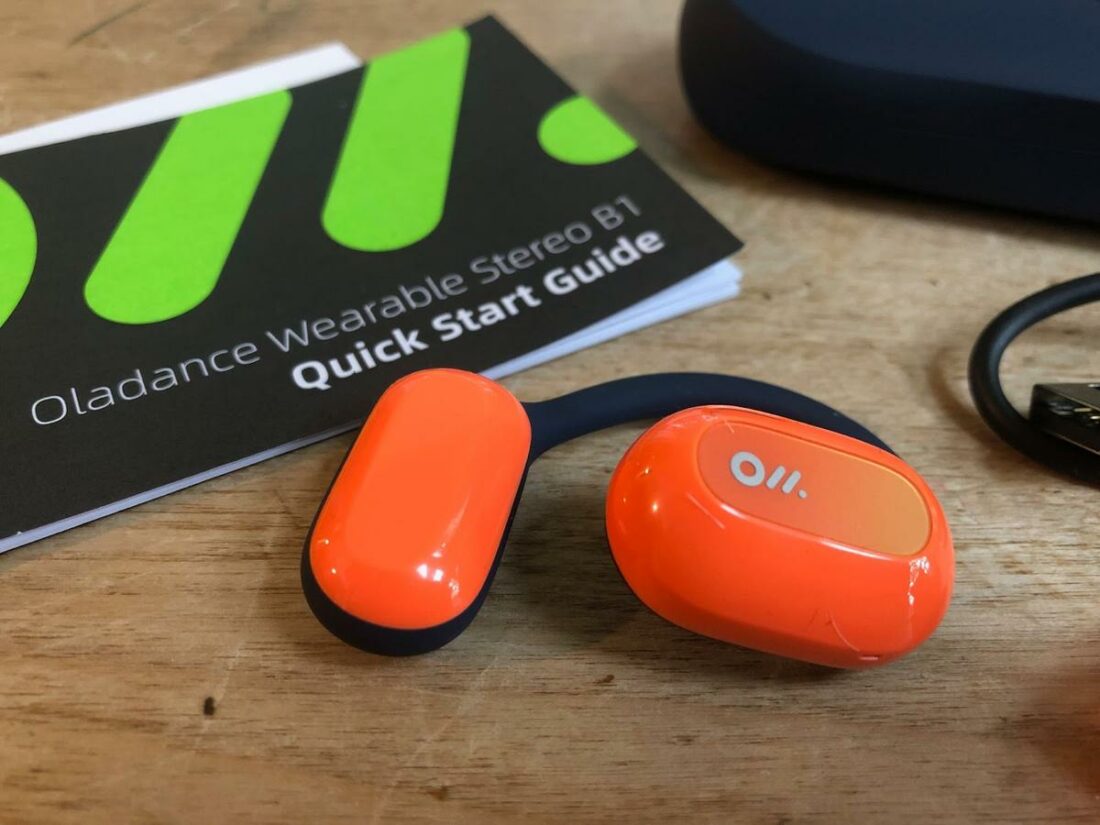
Where to Buy
Conclusion
Full disclosure, since I’ve received the OWS, I’ve set aside bone-conduction headphones – and I’m not likely to go back. Sure, both headphone types have compromises, but the OWS do a remarkable job overcoming sound quality and comfort limitations while maintaining the benefits of environmental awareness, secure fit, and water resistance.
The OWS sit somewhere between bone-conduction and good IEMs for sound quality for music. If the background hiss is not a concern, they are far more listenable than bone-conduction headphones, IMO.
And that’s what it comes down to – the right tool for the job. The OWS are now my go-to for a walk, on a bike, at the grocery store, gardening, snow shoveling, and housework – as long as I don’t plan on using chainsaws, lawnmowers, snowblowers, or vacuum cleaners.
They have a good battery life, but I wish the OWS came with a battery case rather than requiring a separate purchase which bumps the combo price up to around USD$200. This price means the Wearable Stereo are a fairly significant investment for a lifestyle product.
However, if the OWS suit your lifestyle, don’t hesitate to try them. The Oladance Wearable Stereo have made me a believer. Open-ear earbuds are here to stay.
